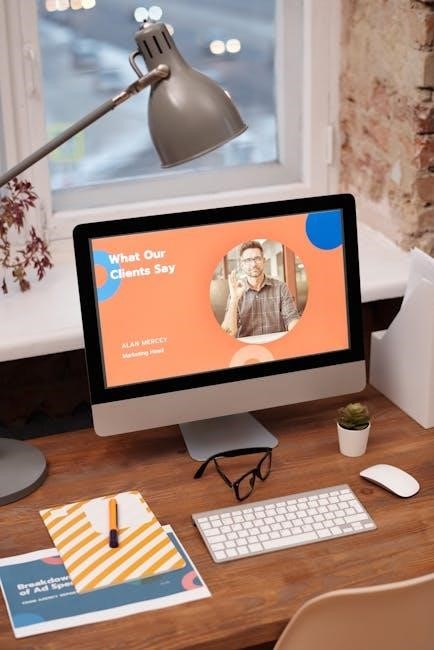Yiddish, a fusion of German, Hebrew, and Slavic languages, is a vibrant cultural treasure. The 100 most common Yiddish words reflect its rich history and emotional depth, offering insights into Jewish heritage and everyday life, while preserving humor and tradition.
Overview of the Yiddish Language
Yiddish is a unique blend of Middle High German, Hebrew, and Slavic languages, emerging in Central Europe during the 10th century. It served as the primary language of Ashkenazi Jews, evolving into a rich, expressive medium for daily life, literature, and culture. Yiddish incorporates a distinct grammar system and a vocabulary influenced by its diverse linguistic roots. Despite its decline after World War II, Yiddish has seen a revival in cultural and academic circles, with efforts to document and teach its 100 most common words. These words capture the essence of Yiddish, blending humor, wisdom, and emotional depth, making it a fascinating language to explore.

Why Learning Yiddish Words is Important
Learning Yiddish words is essential for understanding the rich cultural and historical heritage of Ashkenazi Jews. Yiddish, a language born from the fusion of German, Hebrew, and Slavic tongues, carries profound emotional and historical significance. By mastering its vocabulary, learners gain insights into Jewish traditions, humor, and values. The 100 most common Yiddish words serve as a gateway to connecting with this vibrant culture, allowing individuals to appreciate its unique expressions and idioms. Moreover, Yiddish words have influenced modern English, making their study relevant for broader linguistic understanding. Embracing Yiddish enriches one’s ability to communicate across cultures and generations, preserving a vital part of Jewish identity.

100 Most Common Yiddish Words: An Overview
The 100 most common Yiddish words provide a foundational understanding of the language, covering essential phrases, expressions, and terms rooted in Jewish culture and history, blending German, Hebrew, and Slavic influences.
Top 10 Essential Yiddish Words
Mastering the top 10 essential Yiddish words provides a strong foundation in the language. These include Shalom (peace/hello), Kvetch (complain), Chutzpah (audacity), Mensch (good person), Nosh (snack), Bagel (bread), Schlep (drag/carry), Tchotchke (trinket), Oy (expression of dismay), and Bubbe (grandmother). These words, often used in everyday conversations, reflect Yiddish humor, wisdom, and cultural richness. Learning them helps bridge connections to Jewish heritage and enhances appreciation for the language’s unique flavor and history.
Top 20 Most Frequently Used Yiddish Words

The top 20 most frequently used Yiddish words are essential for understanding the language and its cultural nuances. These include Kibbitz (to chat), Nudnik (a pest), Mensch (a good person), Kvetch (to complain), Chutzpah (nerve), Schlep (to drag), Tchotchke (trinket), Oy (expression of dismay), Shalom (peace/hello), Nosh (to snack), Bagel (bread), Bubbe (grandmother), Zayde (grandfather), Shanda (shame), Feh (disgust), Gelt (money), Meshuga (crazy), Kugel (dish), Simcha (celebration), and Shul (synagogue). These words capture the essence of Yiddish humor, tradition, and daily interactions, making them indispensable for learners. Mastering these ensures a deeper connection to the language and its rich cultural heritage.

Cultural Insights Through Yiddish Vocabulary
Yiddish vocabulary offers a window into Jewish heritage, blending humor, emotion, and tradition. Words like Kvetch and Chutzpah reflect resilience, while terms like Mensch highlight moral values, preserving cultural identity and storytelling.
Expressions of Endearment and Humor
Yiddish is rich in expressions that blend humor with heartfelt emotion. Terms like nosh (to snack) and kibbitz (to joke around) showcase its lighthearted side. Endearments like mensch (a good person) and bubbeleh (dear grandmother) reflect warmth. Phrases like Oy vey (expressing dismay) and chutzpah (audacity) highlight its humor. These expressions, often filled with exaggeration and irony, reveal the resilience and wit of Jewish culture, making Yiddish a unique language of both laughter and love.
Historical and Etymological Context

Yiddish, emerging in Central Europe around the 10th century, is a linguistic mosaic blending German, Hebrew, Aramaic, and Slavic languages. Its etymology reflects the cultural interactions and migrations of Jewish communities. Words like shtetl (small town) and chutzpah (audacity) trace back to Hebrew roots, while baleboste (homemaker) stems from Slavic influences. This unique fusion mirrors the adaptive resilience of Yiddish speakers. The evolution of Yiddish vocabulary is marked by borrowing and adapting terms from coexisting cultures, preserving historical narratives and cultural identity. Understanding the origins of these words enriches their meaning, connecting speakers to a rich, shared heritage.

Practical Usage of Yiddish Words
Yiddish words like Shalom (peace) and Bubbe (grandma) are used in everyday conversations, blending humor and warmth. Many terms, such as Kvetch (complain) and Chutzpah (audacity), have seamlessly entered modern English, enriching communication with cultural flavor.

Everyday Conversations and Phrases
Yiddish phrases like “Shalom” (peace) and “Kvetch” (complain) are woven into daily interactions, reflecting humor and cultural depth. Terms such as “Bubbe” (grandma) and “Chutzpah” (audacity) add flavor to conversations. These words, often used in modern English, highlight Yiddish’s enduring influence. Learning these phrases connects speakers to a vibrant heritage, making everyday dialogue richer and more expressive. Resources like the 100 Most Common Yiddish Words PDF provide practical examples, helping learners master essential expressions for authentic communication.
Yiddish Words in Modern English
Yiddish has profoundly influenced modern English, with words like “schlep” (to drag) and “chutzpah” (audacity) becoming everyday terms. Many Yiddish expressions, such as “bagel” and “lox,” have seamlessly integrated into English vocabulary. These words often carry unique cultural flavors and humor, reflecting their origins. Their adoption into English highlights Yiddish’s lasting impact on global language. While some meanings may shift in English usage, they retain their original charm. Resources like the 100 Most Common Yiddish Words PDF provide insights into these linguistic transitions, making it easier to explore and appreciate their role in modern communication.

Resources for Learning Yiddish
Discover free PDF guides and word lists featuring the 100 most common Yiddish words. These resources provide transliterations, definitions, and examples, making learning accessible and engaging for all levels.
Free PDF Guides and Word Lists
Free PDF guides offer a comprehensive collection of the 100 most common Yiddish words, complete with transliterations, definitions, and examples. These resources are ideal for learners at all levels, providing a clear and accessible way to grasp essential vocabulary. Many guides include etymological insights, highlighting the cultural and historical context of each word. They often feature alphabetical organization and transliteration columns, making it easy to pronounce and understand the words. Additionally, some PDFs include phrases and expressions, offering a deeper dive into everyday conversations. These guides are perfect for self-study or classroom use, serving as a valuable foundation for mastering Yiddish.
Online Tools and Language Courses
Online tools and language courses provide an interactive way to learn the 100 most common Yiddish words. Platforms like Duolingo and specialized Yiddish learning websites offer engaging lessons tailored to various skill levels. These resources often include audio clips for pronunciation, quizzes, and exercises to reinforce vocabulary. Many courses integrate the 100 most common Yiddish words into broader language lessons, ensuring a well-rounded learning experience. Additionally, online forums and communities provide support and motivation for learners. These tools are accessible anytime, making it convenient to study at your own pace and deepen your understanding of Yiddish culture and language.

Tracking Progress in Learning Yiddish
Set milestones with the 100 most common Yiddish words to track your progress. Use online tools to monitor vocabulary mastery and celebrate small achievements to stay motivated.
Creating a Study Plan
A well-structured study plan is essential for mastering the 100 most common Yiddish words. Begin by setting clear goals, such as learning weekly. Break the list into manageable sections, focusing on high-frequency words first. Incorporate tools like flashcards and apps to reinforce memory. Schedule regular review sessions to ensure retention. Track progress using a journal or digital tool to monitor milestones. Engage with Yiddish-speaking communities or online forums for practical application. Consistency is key; dedicate time daily to study and practice pronunciation. Celebrate small achievements to stay motivated. Tailor the plan to suit your learning style for optimal results.
Using Flashcards and Memory Aids
Flashcards and memory aids are powerful tools for learning the 100 most common Yiddish words. Create physical or digital flashcards with the Yiddish word on one side and its English translation on the other. Use apps like Anki or Quizlet for spaced repetition, ensuring long-term retention. Memory aids such as mnemonics or visual associations help link words to memorable images or phrases. Group related words into categories, like food or family terms, to enhance recall. Regularly review and test yourself to reinforce learning. These methods make studying efficient and engaging, helping you master the vocabulary effectively and enjoyably.
